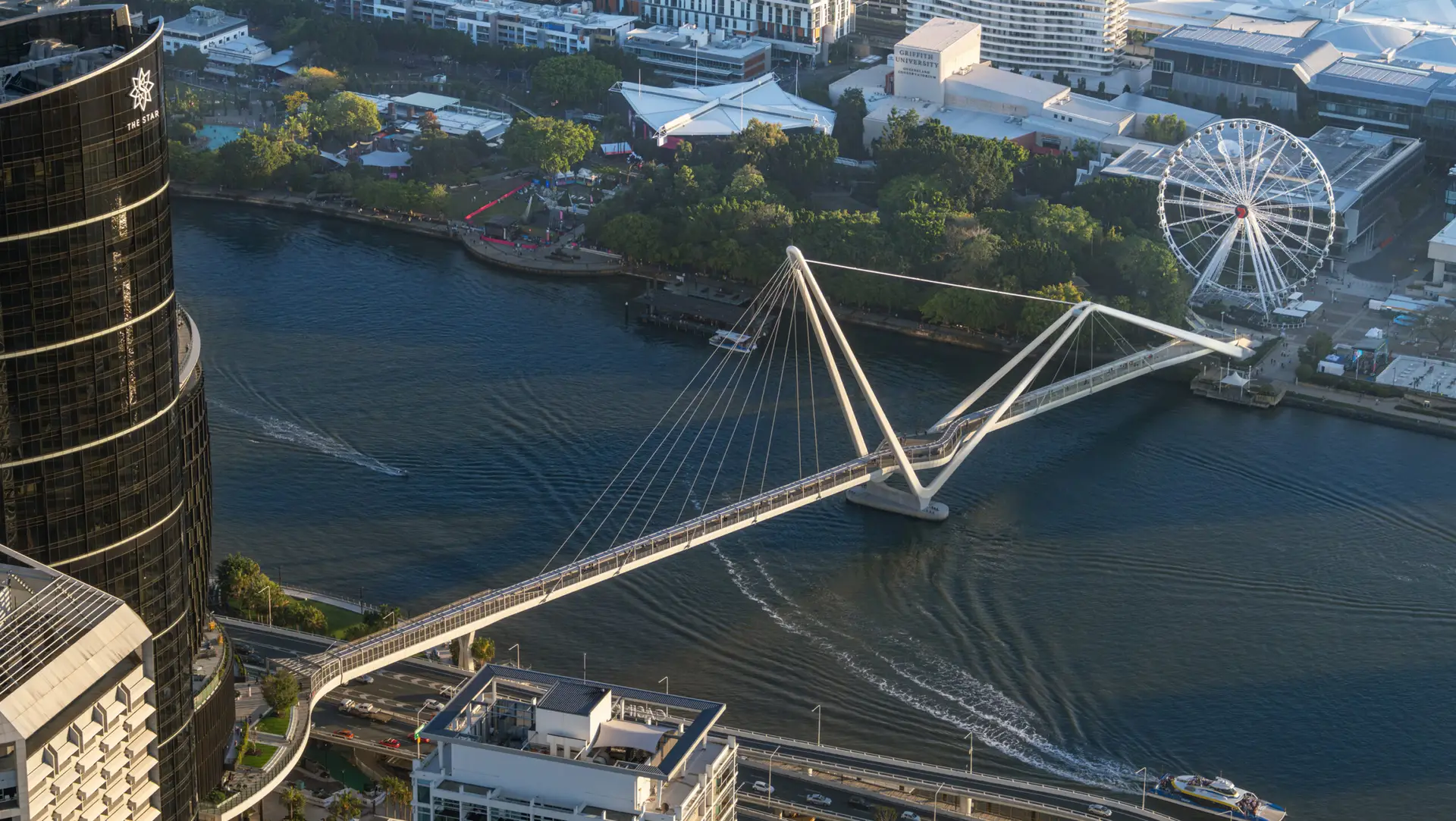Neville Bonner Bridge | Grimshaw

2025 National Architecture Awards Program
Neville Bonner Bridge | Grimshaw
Traditional Land Owners
Jagera and Turrbal people of Meanjin
Year
Chapter
Queensland
Region
Brisbane
Category
Builder
Photographer
Scott Burrows
Media summary
Brisbane is a city defined by its bridges. Seventeen major bridges, including the iconic Story Bridge, have been constructed across the Brisbane River since the first, the Victoria Bridge, was installed in 1865. Neville Bonner Bridge, Brisbane’s first pedestrian-only river crossing in over a century, is not only a vital link between Queensland’s South Bank and the Queen’s Wharf precinct but also a landmark that enhances the city’s public realm. As a bold fusion of engineering, sustainability and placemaking, the Neville Bonner Bridge sets a new benchmark for pedestrian infrastructure in Australia. It is more than a crossing—it is an iconic public space that enhances connectivity, celebrates heritage, and enriches the urban fabric of Brisbane. The people of Brisbane and thousands of tourists have embraced this new urban landmark, with the bridge well on its way to accommodating the projected 9,000 users per day since opening in September 2024.
Destination Brisbane Consortium knew that a project of the scale and ambition of Queen’s Wharf required a considered approach to the how the new built environment would integrate into the urban design and public architecture of Brisbane. The Queensland Government recognised in its vision that a new, exclusively pedestrian link from Southbank to the vibrancy of Queen’s Wharf and the CBD was fundamental to the connectivity between the project and civic fabric of Brisbane. Since opening, it has become a vital connection in the city between the CBD and Southbank achieving more than the projected 9,000 crossings per day.
Client perspective
Project Practice Team
Neil Stonell, Project Architect
Andrew Perez, Project Architect
Jason Embley, Project Lead
Eduardo Velasquez, Project Design Lead
Alan Tier, Project lead
Matt Holloway, Principal
Project Consultant and Construction Team
WSP, Engineer
Arup, Hydrology
Urbis, Landscape Consultant
Urbis, Urban Design Consultant
Goldwave, Primary Steel Fabricators









